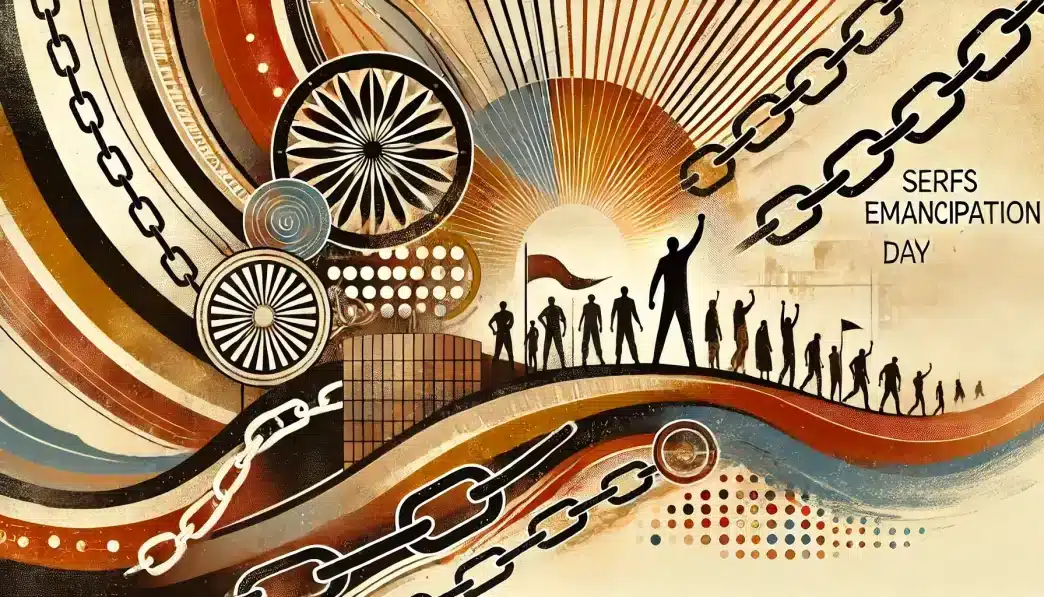What is Serfs’ Emancipation Day?
Serfs’ Emancipation Day is observed annually on March 28 in the Tibet Autonomous Region of China. This day commemorates the 1959 dissolution of the Tibetan government by Chinese authorities. The Chinese government presents this as the “liberation” of one million serfs and the end of feudal serfdom in Tibet. However, critics argue that the holiday is a propaganda tool used to justify China’s controversial annexation and control of Tibet. It is a highly politicized event, viewed by many outside China as an attempt to rewrite Tibetan history and legitimize Chinese authority in the region.
History and Origin
Serfs’ Emancipation Day was established in 2009 by the Chinese government to mark the 50th anniversary of the events of March 28, 1959. Following the failed Tibetan uprising, Chinese Premier Zhou Enlai officially dissolved the Tibetan government and claimed this as the beginning of “democratic reforms” in Tibet. These reforms, according to the Chinese government, ended centuries of feudal oppression and brought equality and development to the region.
However, critics highlight that this narrative ignores the violent suppression of Tibetan culture, religion, and independence during this period. The Chinese government’s claims of liberation are seen by many as an attempt to mask the heavy-handed military intervention and political subjugation of Tibet. For Tibetans in exile and their supporters, the day is a painful reminder of the loss of autonomy, the Dalai Lama’s flight into exile, and decades of Chinese control.
Who Celebrates Serfs’ Emancipation Day?
- Chinese Government Officials: The day is used as a platform to promote the official narrative of liberation and progress in Tibet.
- State-Supported Organizations in Tibet: Schools, museums, and cultural centers host events focused on celebrating the alleged achievements of Chinese governance.
- Chinese Media Outlets: Extensive state propaganda highlights the benefits of Chinese intervention in Tibet, often ignoring alternative perspectives.
- Residents of the Tibet Autonomous Region (Under State Pressure): Participation in celebrations is often state-mandated, with little room for dissent or alternative viewpoints.
- Critics and Tibetan Exiles (In Protest): Many Tibetans in exile and their allies reject the day as a distortion of history and a justification for oppression.
Slogans and Themes
The Chinese government’s messaging around Serfs’ Emancipation Day focuses heavily on themes of “liberation,” “progress,” and “modernization.” Slogans like “Celebrating Democratic Reforms,” “Honoring Liberation and Equality,” and “The Dawn of a New Era in Tibet” dominate official celebrations. However, these slogans reflect a one-sided narrative that omits the voices of Tibetans who experienced displacement, cultural erasure, and the loss of their religious and political autonomy under Chinese rule. For critics, the day symbolizes propaganda rather than genuine progress.
Colors, Symbols, and Patterns
Colors
- Red: Symbolizing the Chinese Communist Party and its revolutionary ideals.
- Yellow: Reflecting prosperity and celebration, as interpreted in Chinese culture.
- Blue and White: Often included to reflect Tibetan cultural elements within the official narrative.
Symbols
- Hammer and Sickle: Representing communism and the role of the Chinese Communist Party in orchestrating the reforms.
- Doves: Used in propaganda materials to symbolize peace and harmony under Chinese rule.
- Tibetan Prayer Flags: Co-opted in celebrations to align Tibetan culture with the state-approved narrative of unity and progress.
Patterns
- Traditional Tibetan Motifs: Incorporated into decorations, often in ways that align with the Chinese government’s framing of Tibetan identity within a broader Chinese culture.
- Sun Rays: Symbolizing a “bright future” under Chinese governance.
Most Used Hashtags
- #SerfsEmancipationDay
- #TibetLiberation
- #ChineseReforms
- #TibetanHistory
- #March28
How to Celebrate Serfs’ Emancipation Day
- Attend Official Ceremonies (In Tibet): Participation in state-sponsored parades, flag-raising events, and cultural performances is common, though often compulsory.
- Watch Government Media: The day is accompanied by extensive documentaries and features produced by state-run media highlighting the official narrative.
- Visit State Museums: Exhibitions showcase materials and photos curated to emphasize the supposed benefits of Chinese governance in Tibet.
- Engage in Protests (Internationally): Tibetan exiles and supporters around the world often hold protests and discussions to counter the Chinese government’s portrayal of the day.
- Educate Yourself: Learn about Tibet’s history from independent sources to understand the broader context behind this contentious holiday.
Why is Serfs’ Emancipation Day Important?
From the Chinese government’s perspective, Serfs’ Emancipation Day is a celebration of the “liberation” of Tibetan serfs and the transformation of society through land redistribution and reforms. However, many outside China view this day as a politically motivated narrative designed to legitimize China’s control over Tibet.
Critics argue that the rhetoric of liberation overshadows the violent suppression of Tibetan resistance, the destruction of monasteries, and the marginalization of Tibetan culture and religion. For Tibetans in exile and their allies, Serfs’ Emancipation Day represents the loss of autonomy and a reminder of the ongoing challenges faced by Tibetans under Chinese rule. The day remains a stark example of how historical events can be reframed to serve political agendas.
Features
- National
